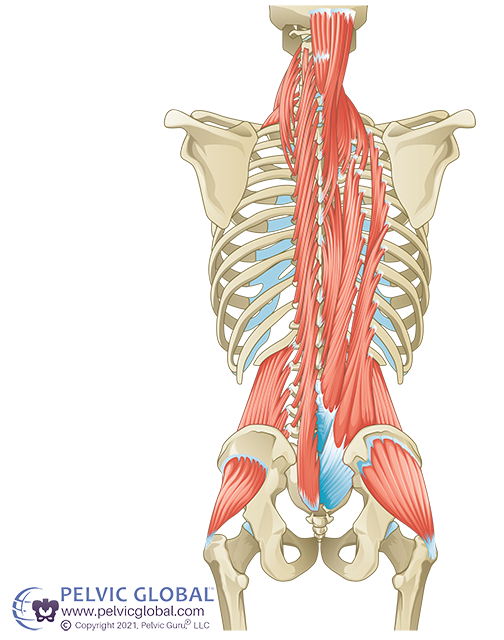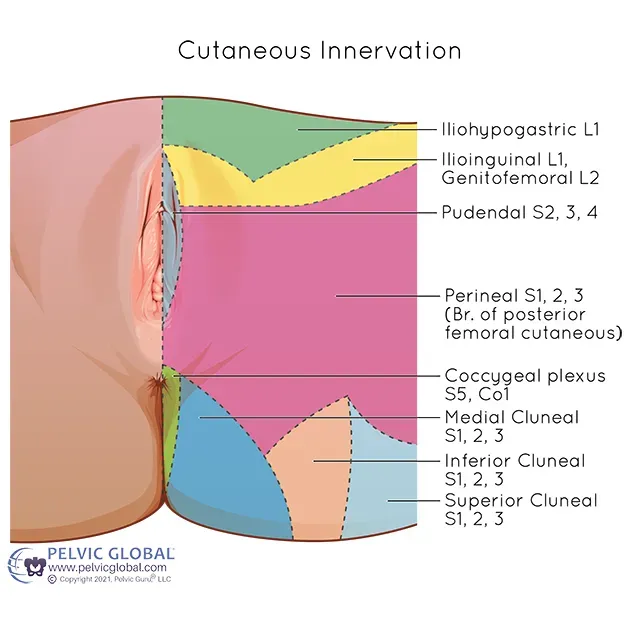The 3 Treatment Methods of Pelvic Therapy
"So what does treatment look like?"
Excellent question! And one we are asked in almost every single evaluation appointment. When it comes to establishing a pelvic health therapy treatment plan of care, we individualize each one because while the diagnoses may be the same, the way symptoms present can differ vastly from person-to-person. As we work through a plan of care we also make changes based on how each patient connects with and responds to various treatment methods. At Pelvic Pride, we emphasize the variety of ‘tools in our toolkit’ when designing each patient’s plan of care. The purpose of this is to empower our patients with the information needed to decide which treatment methods feel best for them and their bodies, as well as to acknowledge that it's okay to change their mind at any point in their plan of care.
For example, as a pelvic health therapist, we can integrate hands-on manual therapy treatment within the pelvic floor muscles via an internal approach, however this may not feel like the best treatment option for each individual and that's absolutely okay!
We commonly integrate various treatment methods to work toward your goals that do not involve internal pelvic floor treatment, including but not limited to, external hands-on and off manual therapy approaches to the muscles and tissues surrounding the pelvic floor structures, stretches and exercises, breathwork, addressing the nervous system, as well as education and developing your home program.
To help our patients understand what exactly we will be doing in pelvic floor therapy, we divide our treatment methods into three main categories:
- Direct,
- Indirect, and
- the Nervous system
Direct Treatment
Direct treatment is exactly what it sounds like - treatment focused specifically on the pelvic floor structures including the muscles, ligaments, bones and joints associated with the pelvic girdle. This is where our skills as pelvic health therapists really sets us apart from other physical therapists in the field. We undergo extensive training to understand the anatomy (what exactly is down there) and biomechanics (how it works) to be able to treat the pelvic floor muscles directly via internal methods.
If your provider is not doing an internal assessment (unless you’ve declined consent which is 100% valid!) then they are doing you a disservice!
Image used with permission from Pelvic Guru®, LLC as a member of the Global Pelvic Health Alliance Membership (GPHAM)
Above: pelvic floor anatomy including pelvic floor muscles, ligaments, connective tissue, bones, joints, nerves
Direct treatment may include
- hands-on stretches and trigger point release
- focused pelvic floor relaxation/gentle bearing down
- training for home use of a pelvic wand &/or dilators
- pelvic floor muscle coordination training
It is imperative to provide this treatment in a way that best serves you and your symptoms, meaning we may be providing direct treatment in a variety of positions. This could look like a standing, kneeling, or hands and knees assessment to determine how your pelvic floor muscles are managing pressure when you are doing the activities that bring on your symptoms.
Trust us, most patients don’t come in and say “You know when my prolapse symptoms are the worst? Laying down in bed” or “I leak constantly when I am sitting on the couch” - it’s when they are moving around, changing positions, exercising, preparing a meal, or laughing with friends. Don’t worry we won’t make you stand up and laugh but we will definitely discuss performing an assessment in a different position if we find it is clinically relevant. And we know these assessments may sound awkward but we promise it’s not as bad as it sounds and can give us such great information to help guide your treatment.
Indirect Treatment
Indirect treatment focuses on the muscles, joints, and connective tissue that surround the pelvic floor and oftentimes share fascial connections with the pelvic floor musculature. These neighboring muscle groups work closely with our pelvic floor to manage pressure (so we can do things like squat or lift without leaking, pressure or pain) and support our pelvis, spine, and abdominal organs. You will likely see other pelvic providers on social media telling you things like “the abdominals and pelvic floor muscles are best friends” and they aren’t wrong! So if the abdominal muscles are tight they may feed into a tight pelvic floor, or vice versa. We also commonly find patients with shortened inner thigh muscles also experience tension or pain in their superficial pelvic floor muscles.
Image used with permission from Pelvic Guru®, LLC as a member of the Global Pelvic Health Alliance Membership (GPHAM)
Above: musculature and connective tissues surrounding the pelvic floor
So to ensure our treatment is well rounded we will include assessment of the thoracic & lumbar spine, inner thigh & outer hip muscles, the abdominals, and/or the diaphragm. This treatment type may additionally integrate specific stretches, yoga poses, exercises, and mobility-based routines. So when we say there is more than just kegels in pelvic floor therapy - this is what we mean!
Research has found that strengthening hip musculature can help improve intravaginal squeeze pressure - so instead of doing 1000 kegels why don’t we do a more well rounded exercise routine. (Tuttle, 2020) Plus most people have weakness in their gluteus medius muscles anyway so it’s a win-win!
The Nervous System
Along with shortened, guarded, painful, or even weak pelvic floor muscles we typically find that our patients’ nervous system is ON FIRE! Meaning their nervous system (made up of your brain and nerves coming from the spinal cord all the way out to your fingers and toes) is upregulated - or the threshold that it typically takes to perceive pain/danger has been lowered to the point that the slightest thing can trigger their symptoms. When our nervous system is in this state, many systems can be impacted including bladder and bowel health (like urinary urgency/frequency and constipation), our ability to return to movement and exercise, as well as how our body perceives pain.
Image used with permission from Pelvic Guru®, LLC as a member of the Global Pelvic Health Alliance Membership (GPHAM)
Above: the paths of the peripheral nervous system including innervations in and around the pelvic floor
Pelvic floor therapy plays a key role in calming the nervous system from this heightened state of fight-flight-freeze-fawn back to its safe baseline of rest-digest-repair. We utilize multiple treatment methods to help encourage this 'grounded' state, including diaphragmatic breathing, mindfulness, vagus nerve stimulation, graded exposure, as well as discussing how 'big picture' items may be impacting your symptoms, including stress, sleep, nutrition, and daily movement.
Your pelvic health therapist may integrate treatment techniques from each of these types of treatment during your in-person sessions as well as incorporating them into your individualized home program to uncover which treatment methods may work best for you. With that said, it may take a few sessions to complete all evaluation measures, continue to discuss your story and symptoms, as well as navigate these treatment approaches to work toward your short-term and long-term goals.
Pelvic health therapy is a collaborative effort and further, a method that works well for one person may not be the best fit for the next. Your feedback at each step is crucial to helping us determine what treatment methods are working and which ones could use some adjustments.
In Review
Pelvic health physical therapy expands beyond a 'one-size-fits-all' approach. As pelvic health therapists we are here to listen to YOUR story and understand your priorities for your care to ensure the plan we implement is focused on YOU. If you have any questions regarding the information above or if pelvic health treatment is best for you, please feel free to reach out to us at Pelvic Pride.
- Tuttle LJ, Autry T, Kemp C, Lassaga-Bishop M, Mettenleiter M, Shetter H, Zukowski J. Hip exercises improve intravaginal squeeze pressure in older women. Physiother Theory Pract. 2020 Dec;36(12):1340-1347. doi: 10.1080/09593985.2019.1571142. Epub 2019 Feb 1. PMID: 30704364.
Where to find treatment in Maryland
At Pelvic Pride Physical Therapy & Wellness, we specialize in the treatment of ALL pelvic floor conditions! We are conveniently located in the Federal Hill neighborhood in Baltimore MD. Fill out our contact form & our Patient Care Specialist will reach out to you ASAP!
Next on Your Reading List
Love our content? Let's stay connected!
Subscribe to our newsletter for personalized updates when new blog posts are dropped.
















